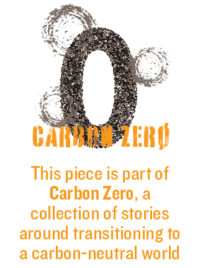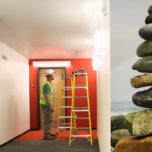January 18, 2024 —  We’ve known for a long time that improving the built environment’s energy efficiency is good for the planet. A recent report by McKinsey Sustainability makes it clear how good it can be for business, too. And with nearly one-quarter of human-produced greenhouse gases tied to making, transporting and using building materials, and/or operating the things they’re used to build, identifying low-cost, low-carbon alternatives holds potentially huge payoffs.
We’ve known for a long time that improving the built environment’s energy efficiency is good for the planet. A recent report by McKinsey Sustainability makes it clear how good it can be for business, too. And with nearly one-quarter of human-produced greenhouse gases tied to making, transporting and using building materials, and/or operating the things they’re used to build, identifying low-cost, low-carbon alternatives holds potentially huge payoffs.
“Building value by decarbonizing the built environment,” published in June 2023, details the most promising of more than 1,000 strategies for reducing the climate impact of the built environment. For each, the researchers analyzed the potential reduction in greenhouse gas emissions; cost or savings compared with alternatives; and potential cost or savings if the technology or practice were scaled. They then sorted the best strategies according to the different categories of built environment (single-family dwellings, commercial buildings, highways, etc.) while also considering location factors such as the regulatory environment and local climate.
According to the report, many carbon-cutting strategies don’t cost any more than conventional approaches but make a big difference in climate impact. For example, the researchers found that heat pumps, which can dramatically reduce carbon emissions from home heating and cooling, already are cost-competitive with conventional heating and cooling systems.
“Our analysis shows that many levers not only have proven abatement potential but are also already cost-effective,” the report notes. “In other words, companies across the built-environment ecosystem could derive value immediately from theses lower-emitting technologies and solutions.”
Not only that, but many more strategies could become cost-effective if entrepreneurs collaboratively take the opportunity to invest in developing the technologies and systems needed to bring them to scale. Specifically, the report details 17 areas that offer particularly promising opportunities for both high financial and high environmental returns on investment, clustered into eight main categories: 1) industrializing green materials production, 2) industrializing energy-efficient technology production, 3) making it easier to upgrade systems, 4) design and engineering, 5) electrifying construction, 6) reducing waste and speeding processes through offsite construction, 7) providing validation and certification of climate-friendly activities to build credibility, and 8) providing financing.
What’s standing in the way? A lack of awareness, reluctance on the part of insurers and banks to support new things, and a potential shortage of materials and labor to implement them, the report says. At the same time, it adds, innovators willing to step into untested space stand to substantially benefit by doing so at this inflection point in the industry. And the more, the better: If innovators collaborate across the board, the building sector’s climate impact could plummet 75%, according to the report.
“Decarbonizing the built environment is a significant challenge with the potential for equally significant value creation,” the authors conclude. “Despite the size of this task, there are clear actions that each player can take today to reduce the [building sector] ecosystem’s carbon footprint and capture value from new business opportunities.”
Related Posts
Ensia shares solutions-focused stories free of charge through our online magazine and partner media. That means audiences around the world have ready access to stories that can — and do — help them shape a better future. If you value our work, please show your support today.
Yes, I'll support Ensia!




